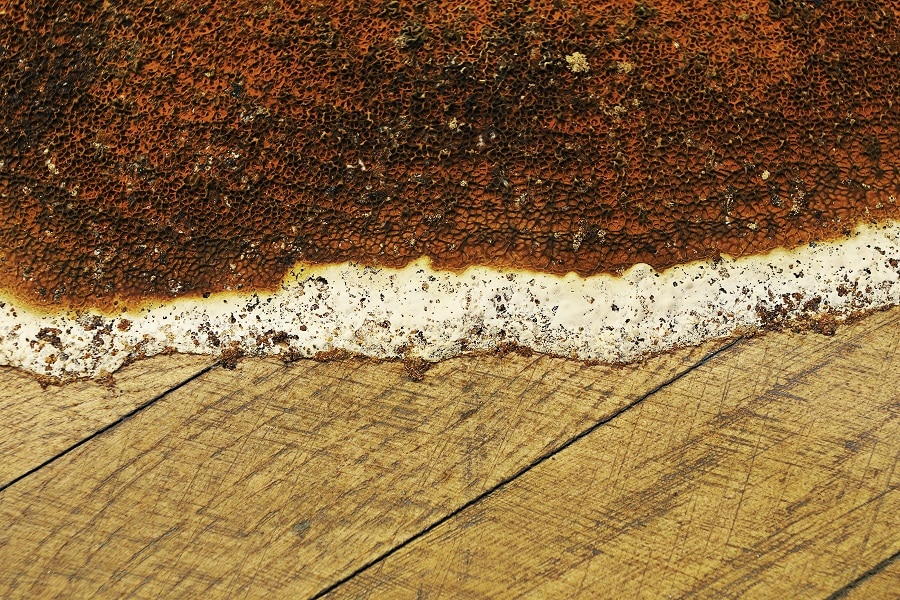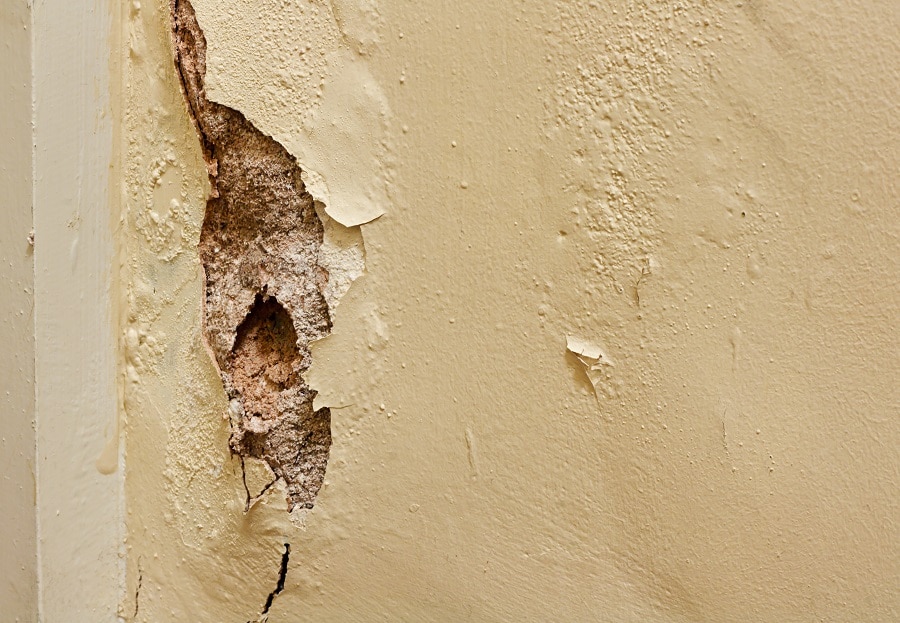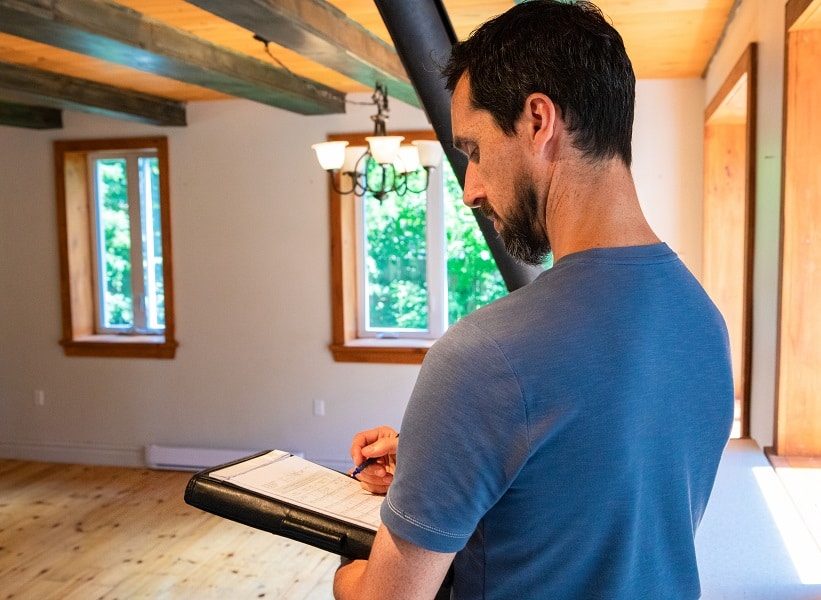What is dry rot?
Wood-decay fungus is often called dry rot. Wood is broken down by Sporocarp (fungi), as the Mycelium consumes the wood, dry rot occurs resulting in fine dust particles, decomposition of the wood and dry rot bloom. Dry rot fungal spores need an adequate place to land and begin their colonies before they disperse through the underlying wood. Many of these spores can be found in soil and old wood already affected by dry rot.
This means that dry rot can re-infect even treated wood if it is damp enough (i.e., below 15% relative humidity). Dry Rot causes significantly greater damage than Wet rot, you may be shocked to hear that dry rot fungus can attack the structural timber in your property whilst remaining undetected. It often happens where you don’t look. This could be found behind the plaster, beneath your floorboards, or even in your loft. This is why it’s essential to know the signs and symptoms of dry rot and to get it treated quickly.
Our Guarantee
- upto 30 year guarantee
- customer focused team
- 20 years combined experience
- portfolio of satified customers
- attention to detail
- Construction line accreditation
- public liability insurance
- CHAS accreditation
What is the difference between dry rot and wet rot?
Dry rot and wet rot are different because they have different species. Unlike dry rot which can spread in minimal amounts of water, wet rot is dependent on significant moisture to spread. Contrarily, dry rot does not spread as easily as wet rot. This is because the use of oils within timbers effectively fills the capillaries that Dry Rot requires for infestation. Dry rot is extremely destructive and spreads quickly through a house, even retaining its ruinous effects if the room has been previously treated for damp or wet rot. On the other hand, wet fungus occurs when timber becomes wet for long periods of time.
Call Our Sussex Damp Experts team now for quote, consultation and advice:
Call on 01273 257 765.
What are the causes of dry rot?
Many types of fungi lead to dry rot. In Eastbourne, the most common is Serpula Lacrymans. If it’s not handled fast enough, it’s going to spread over your house, brick and mortar, and even plaster. This would damage the integrity of your structural wood, and thus the structural integrity of your whole residence. Dry rot attacks when you have an unhealthy amount of moisture in your timber. This attracts the fungus that is going to use this moisture to produce nutrients. The name “dry rot” is used to separate “wet wood” from “dry wood rot.”
Wet wood feeds on dry rot. While fungal spores need over 30% wetness to generate hyphae after this, these hyphae only need 20% wetness to survive. These threads can turn into fungal bodies called mycelia, which can also extend to find more wood in stone and brick. H2O, Hemicellulose and cellulose can be stripped from the timber by this fungus, leaving behind a fragile structure of the original wood. You need an expert to examine your property and determine whether your rotting timber is a result of dry rot or a different type of fungus. It’s important to note that not all treatments will work for every case of nicotine damage.

The dangers of dry rot in Eastbourne
Dry Rot Effect on your Property
The greatest issue with dry rot is that it can easily attack the structural integrity of your house. It will spread along the structural timbers inside your property and begin to break them down. But a slow leak could expand over time, and in extreme circumstances, cause various parts of your home to fall. It won’t attack the mortar between your bricks or stones, but it can travel through it. This is why regular checks are highly essential.
Dry Rot is a severe issue, which needs immediate maintenance and treatment. When fungus is evident, you need to call a restoration expert right away to prevent mold growth from worsening any damage that may be apparent. If you think that you might have an issue with dry rot or dampness in your home, check out Sussex Damp Experts today.
Dry Rot Effect on Your personal health
The fungus that causes dry rot is not harmful. Yet, if the conditions in the home allow dry rot to occur, these environmental conditions can be damaging to your health. If you suffer from respiratory problems, asthma or allergies and don’t have a smoke alarm, then this guide is for you.
What are the Warning Signs of Dry Rot?
The sooner you find dry rot, the less time and money you need to waste on treating it. If any of these signs and symptoms are present, a formal evaluation is recommended.
-
The beginning of the dry rot cycle
Fungi spores may travel through air via wind in order to infect a new host. If they are carried onto timber, they will begin to feed on it. When the wood has enough moisture, it allows fungal spores of Armillaria mellea to germinate and create hyphae, if the timber is giving them enough nutrients to do so. As these hyphae grow and feed, they will join up into a spider web-looking collection called mycelium. Mycelium might be light gray or solid white. This mycelium can also reach into your properties bricks, mortar and wood to try and reach more of your timber.
-
Your timber is damaged.
You are likely to start noticing rot issues if your timber begins to dry out. This will sometimes even cause your timber to crumble. The first sign of dry rot is darkening of the wood. In fact, dry rot can result in what is called cuboid cracking. Cuboidal cracking/splitting is the result of timber breakage around 50 mm. The distinctive symptom of white rot in wood is a creamy colour to the wood due to a white fungal growth called “hyphae”. Hyphae may appear like cobwebs, which is a common sign of dry rot.
-
Your timber will smell.
If your wood is infected by dry rot, it will have a different, fungal smell. This can happen even though you can’t see an epidemic of dry rot. The smell doesn’t necessarily mean dry rot is present.
-
Your timber will have fungus bodies on it.
The most noticeable stage of dry rot is the final stage. Mushrooms such as fruiting bodies might start to join themselves with your timber. They occur when dry rot can no longer feed on the wood, so the fungus has to churn out spores instead.
-
Your timber will have spore dust.
Spores related to dry rot do not only exist in wood damaged by dry rot. It is a sign of dry rot when splotches of corroded dust embedded dry rot spores. Fruiting bodies release this spore dust in the last stage of the dry rot cycle.
Dry Rot Treatment in Eastbourne

Only when the moisture is over 20% will a dry rot invasion take place. Controlling moisture levels in your living space/property is the first preventative step to eradicating the presence of the fungus. Now you will be in control of the moisture levels. We advise you to commission an expert in order to treat dry rot.
Sussex Damp Experts can help you with the removal of infected timber and any remedial work. Any affected timber should be handled by a professional. A professional damp proofing expert has the knowledge of the exact treatment. Either injected into the timber, or cover the timber surface can timber be treated. There are also several preventative treatment options available. Such chemicals require precise concentrations and can have adverse side effects if mistakenly inhaled or injected.
A specialist can also insert Boron rods into your timber. Boron is a hazardous mineral, so it is important to wear protective clothing whilst damp proofing your basement. With our specialist team at damp proofing, we will be able to find any issues with dry rot and assess the extent of the issue. Dry rot can take hold of your home very quickly, if you want to ensure that you don’t fall victim to this problem, it is important to treat dry rots right away. In order to protect a wooden structure, it’s critical to treat dry rot immediately. Our team at Sussex Damp Experts will implement a suitable treatment that addresses your problem efficiently and cost-effectively. You shouldn’t delay. If you spot any signs of dry rot, call us immediately on 01273 257 765 to protect your home.
How can you prevent dry rot damage in Eastbourne?
The first treatment phase is the removal of dry rot. Most typically, a rot invasion occurs near an area that has a high amount of moisture and where the wood has enough space to dry and shrink. Practices that prevent them from forming: Confirm that your house doesn’t have any leaks. Provide adequate, proper ventilation.
Well, ventilate and enclose the attic. Oxygenate crawlspaces very well. Keep everything dry down there with watertight crawl space floors. To ensure the water is correctly guided, check all flickering walls and roofs. Stay out of sinks and drains. Using a wet system? Check for plumbing and heating leaks in your home. The best way to reduce the risk of dry rot is to reduce moisture levels, because of the moist conditions needed for fungus to feed and germinate. For instance, if you plug the leak, you prevent water from flowing into the pipe and causing future damage.
Speak to a Dry Rot specialist in Eastbourne
We are ready to cope with any damp or dry rot issues involving your property or house. We will perform a full damp survey of the property and give you a free estimate before we start any work. Over the years, we supported the damp concerns of thousands of home Eastbourne owners and could even benefit you. You can get in touch with us for a free consultation and quote on 01273 257 765. I am an expert in dry rot and timber treatment. I can visit your property to identify the extent of the infestation and recommend a solution specific to your requirements. We are not tied to any special interest groups or companies, and can therefore give you advice on the treatments that will be best for you.

We have a complete list of expert surveyors who carry out all types of surveys and assessments, from pre-purchase surveys to full structural repairs. Dry rot gets worse over time by its nature, it is important to contact us immediately if you think you have a problem. Sussex Damp Experts will be able to help you no matter what the nature of your damp issue is, email or call us on 01273 257 765
FAQ
Should dry rot be restored or replaced?
A certain level of dry rot can be repaired, but whether the damaged areas provide the house with structural stability, such as beams and joints, or even flooring, it is not recommended. Replace the wood in such a situation instead of repairing it. Whether you restore or rebuild the wood, it is better if you avoided the conditions that caused the rot to flourish in the first place or risked it coming back. Your roof leaks, broken gutters, or downspouts, plumbing leaks or insufficient ventilation should be inspected when considering a roof moisture accumulation You may consult a specialist to find and repair the problem.
Will you be able to treat my Dry Rot problem effectively?
With our expertly trained surveyors and specialists, a dry rot problem can be treated, rectified, and your timber can be protected for the future.
How do I discover how far Dry Rot has spread?
If you have traced the dry rot fungus quickly or not, a professional will identify the source of the problem. They will be able to trace the fungus in the different masonry and plaster from which it has spread.
How much can dry rot widen?
Dry rot spores can spread in anyplace with the right environmental settings. The reason is that they are carried in the atmosphere. If your timber has a moisture content of around 20%, and if it is in the open air, these conditions are attractive to dry rot fungus. This suggests that fungus groups can disperse to multiple materials. If dry rot is spreading across masonry and plaster, and if it reaches more timber to feed off where the timber is moist. It can widen further. Dry rot fungus needs five things to survive: the right temperature, drive rot spores, moisture, oxygen, and the food source. In any home in Brighton most of this is present.
Will dry rot stretch?
What should I do to control dry rot?
First identify the reason for your timber moist before solving it. A different treatment shall be given if the reason for your timber moisture is outside.
What are the effects of living dry rot unchecked?
Dry rot is the most insidious form of moisture that can infest property and cause permanent damage to the building if left untreated. Sometimes, once the harm is already done due to the places in which the problem is likely to be the presence of dry rot does not come to light.
Is dry rot stringent?
Dry rot can be particularly common in wooden properties, so it is essential that early signs of dry rot are identified before the damage becomes too severe.
How am I meant to know if I have dry rot?
A timber survey will assess how your timber is affected by being exposed to moisture. Later on, fruiting bodies and mycelium will be noticeable in the drive rot life-cycle.
Where can dry rot grow?
Dry rot attacks and rots timber that’s been in contact with water for a long period of time. Although it can often be mistaken for other problems in its early stages, it is important to seek advice. In every structure, both old and new, dry rot can grow. The reason being that it is caused by moisture and wetness that happen anyplace. Dry rot can be caused by leaks or weather, meaning the type of property does not affect it.




